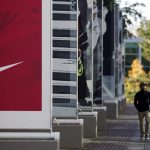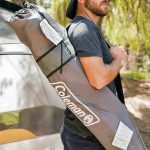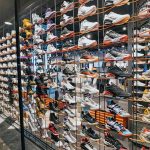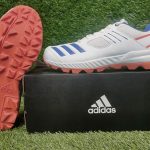Speaking at the B. Riley & Co Investor Conference, Skechers USA’s COO and CFO David Weinberg said Skechers new performance push, represented by its GOrun and GOwalk lines, are generally doing “quite well” with many other styles coming soon.
“The shoes are very colorful and get demand everywhere in the world,” said Weinberg. “Everyplace it’s warm they sell well.”
GOrun and GOwalk, which were launched last fall, will soon be joined by GOtrain and GOride, which are currently be tested in key wholesale accounts and its own stores. In two months, GObionic and GOtrail will be introduced.
Weinberg said the good early response to GOrun and GOwalk is largely driven by overall demand with the lightweight running category “hot right now.”
But he added, “I think what we bring to it is that it’s now fashionable as well. We have a lot of color, it’s technically sound, it’s at a legitimate price point. So between GOwalk and GOrun, everyplace we’ve placed it around the world, it’s starting to sell and sell well.”
He also noted that although GOrun and GOwalk aren’t a substantial part of the business, performance becomes a bigger opportunity as Skechers takes down some of the learnings in developing the line to other areas as it has done in the past. Lightweight models at even more moderate price points can be found among its Active and Sport lines. Said Weinberg, “So it’s a whole phenomenon and whole category.”
Regarding toning, Weinberg said with competitors exiting the marketplace and inventories reduced at retail, “we find there is demand so there is actually an ongoing business.” The question, he cautioned, will be at what price point and what volume after inventories are completely cleaned out, which he estimates will occur in the first quarter of 2013.
Overall, athletic accounted for 42 percent of Skechers sales in its first quarter, with non-athletic at 29 percent; kids, 21 percent; work, 7 percent; and fashion, 1 percent. Weinberg noted that the largest part of athletic is its Sport and Active entry-price shoe categories.
Among other areas, its newer Bobs line is “doing quite well,” while Bella Ballerina and Twinkle Toes are “doing very, very well” in kids.
By gender, women’s accounted for 43 percent of its mix in Q1, followed by men’s, 32 percent; and kids, 25 percent. By channel, specialty retail was the biggest channel at 50 percent, led by its presence in the family footwear, a channel where Skechers “continues to do quite well.” Athletic & independents made up 10 percent and department stores, 40 percent.
Skechers has 335 company-owned stores and close to 550 to 600 including those operated by distributors. Weinberg said the stores are “without a doubt marketing vehicles.” Although he admits that some wholesale accounts complain when a Skechers store opens, nearby wholesale accounts generally benefit when a store opens. The primarily reason is because Skechers stores don’t compete on price while its wholesale accounts are allowed to.
In the same vein, Weinberg noted that one of the reasons that Skechers’ e-commerce volume may be lower than other footwear suppliers is because it doesn’t compete price with Zappos or the online stores of Penney and Famous Footwear. Said Weinberg, “We try to showcase the brand and we’re always at full price.”
Weinberg reiterated that “barring any big changes,” Skechers expects to have positive backlogs going into the second half of the year with revenue increases in the second half expected across all three segments: domestic wholesale, international wholesale, and retail. With the notable exception of Penney, which is going through a merchandise overhaul, Weinberg said, “Most of our large customers have ordered more quantities than we shipped last year.”















